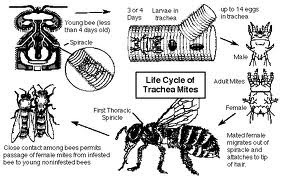A bee honey extractor is one of these tools that you will need in beekeeping project , it is basically a modified centrifuge which is designed to extract honey from the frames without damaging the honey comb.
The extractor includes a container that holds a basket of frames in it, which spins throwing the honey out of the frames by the centrifugal force.
You will find honey extractors with different capacities depending on the number of frames in there containers :
- Small capacity extractor : contains two –frames at least , it is used manually or by electric power .
These extractors are suitable for the hobbyist and the beginners in beekeeping.
- Large commercial extractor : is able to contain more than hundred frames .
There are also two types of extractors depending on how the frames are placed in the container :
1-Tangential extractor :
The honey comb is placed with one side of the frame facing outwards.
2-Radial extractor :
The honey comb is placed with the top bar facing outwards .
By using the radial type you do not need to turn over the frames to extract the other side , since all the quantity of honey went outwards already and could be directly tapped or pumped out , so this type is preferred than the tangential type for its reducing the time and effort of extraction work .
Honey extraction must be performed in a special hygienic room ,with an adequate temperature to allow a smooth honey flow .
This room contains all the tools and equipments required and must be sealed securely to prevent other insects and bees .
The extraction process :
The initial step is preparing the frames by breaking and removing all the wax caps covering it .
These caps are made by bees to keep and store the honey that placed into the honey combs .
The uncapping task can be done with the help of an automated uncapper or manually using a knife that is heated prior to cutting of the caps.
The uncapping process results in removed small pieces of wax which are actually rich in honey which needs to be drained by the means of a little heating.
After the uncapping process all frames will be placed in the container of the honey extractor.
The frames must be placed properly to the right direction.
You should place the comb a little upward to avoid the honey flowing out and then let it spin.
The honey that comes out from the extractor still contains small pieces of wax hence you need to filter it through a strainer to obtain the clear honey.



 00:11
00:11
 magdy elhalawany
magdy elhalawany




















